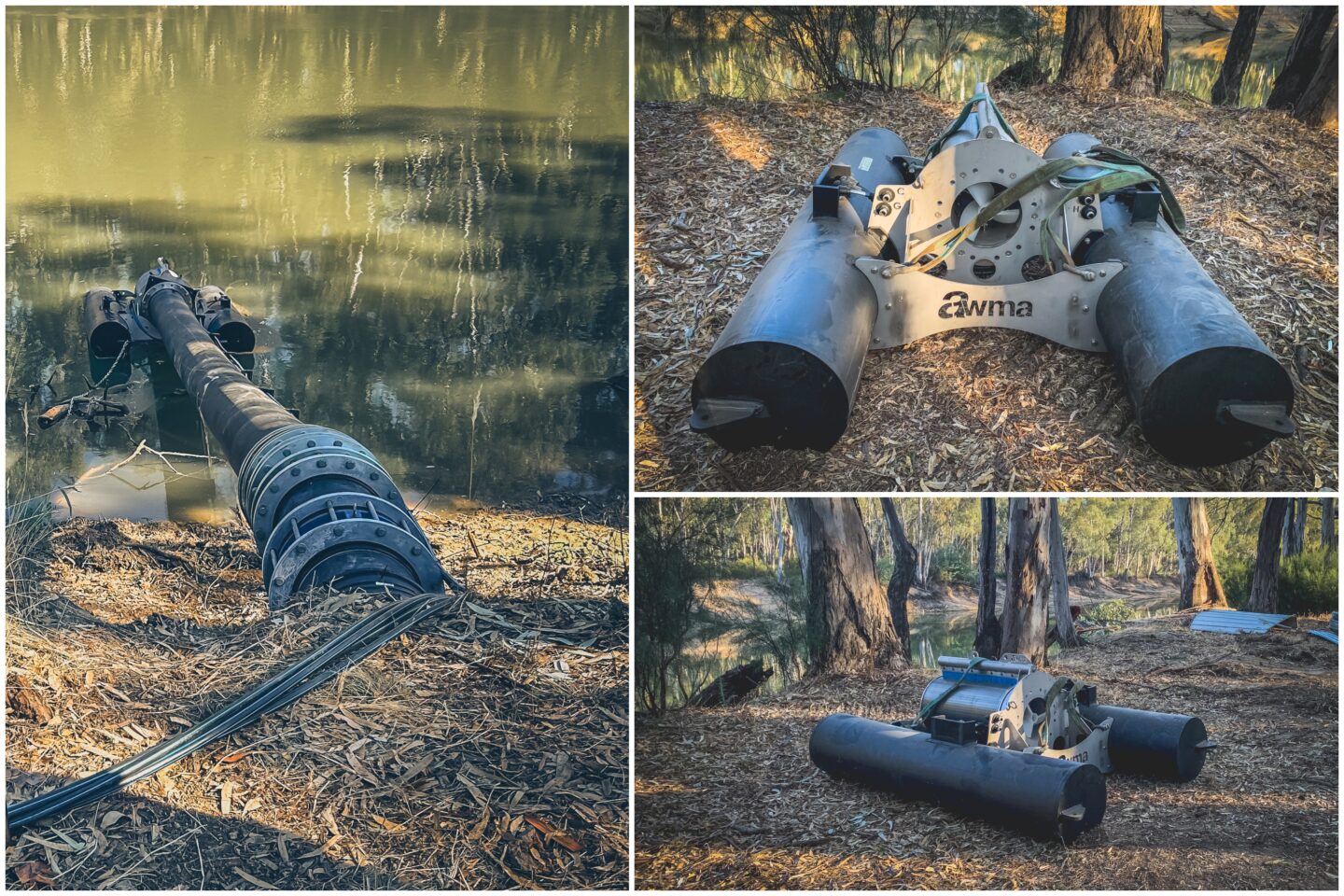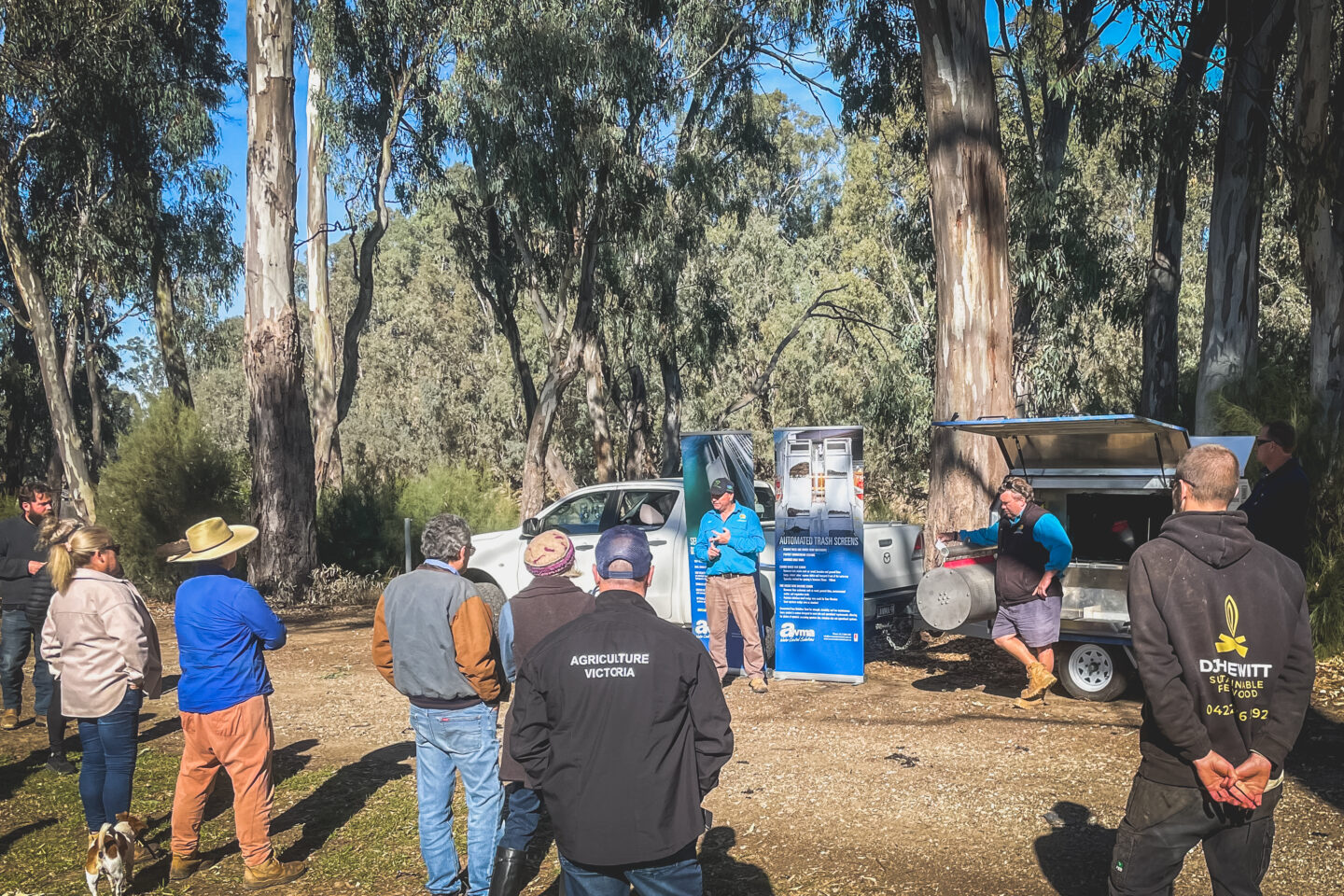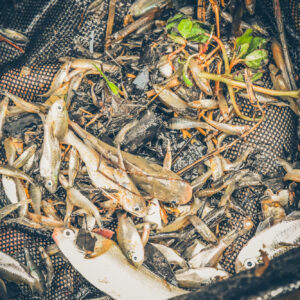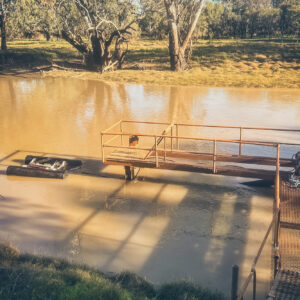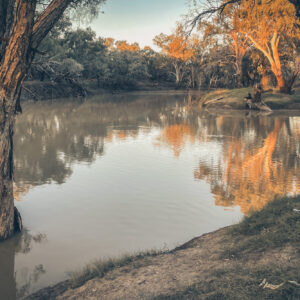Protecting Ramsar sites from pest fish (with modern screens)
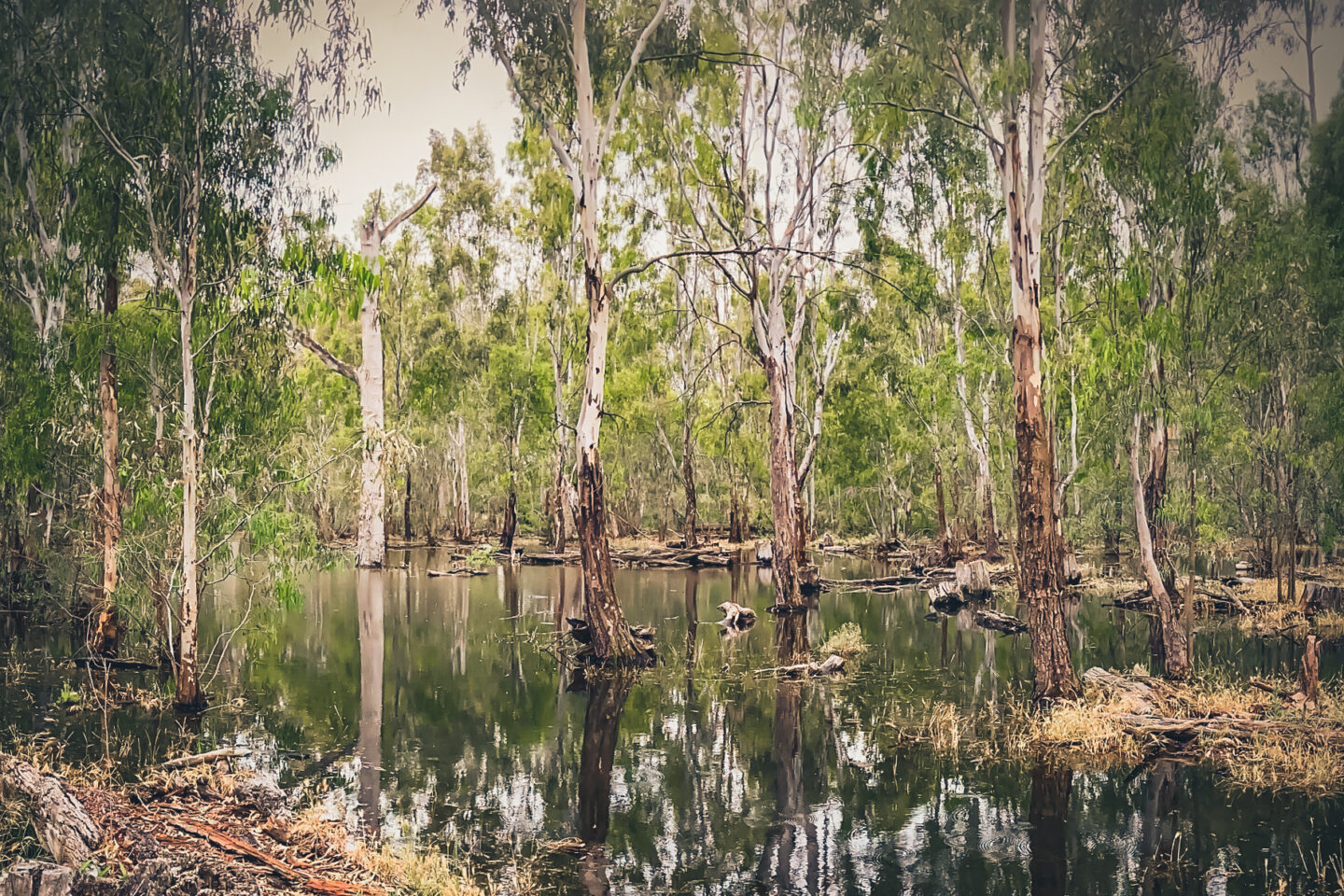
Water users and community members are learning new ways to protect native fish and wetland ecosystems. In May 2024, the Western Murray Land Improvement Group (WMLIG) presented their recent project to install modern fish-protection screens on pumps delivering water for the environment.
Two pump stations have been modernised as demonstration sites, implementing best-practice technology to support management of the Little Forest wetland. Together, the two demonstration sites will screen up to 37 ML/d entering this 290-hectare portion of the internationally-significant NSW Central Murray Forests Ramsar Site.
On the day, one of the new screens worked away in the river while WMLIG’s Leigh Fletcher and Roger Knight described their goals. Among these is the exclusion of adult pest fish such as carp, weather loach and redfin, which can outcompete and displace native fish species and damage natural ecosystem functions.
The screens installed by WMLIG were locally-manufactured. Their innovative design allows the screen to be raised to the surface for inspection and maintenance, by pumping air into the pontoons.
The modern screens also protect native fish, by retaining them in their primary habitats of the Murray River. Leigh and Roger are excited to use the sites to showcase how fish screens work and help other water users understand the benefits and costs involved.
Other speakers included local fish ecologist Dr John Conallin from Charles Sturt University, Anthony Moore, who is a Fisheries Manager at NSW DPI, and Leigh Scoullar, from one of the leading screen manufacturers, AWMA Water Control Solutions.
Education and awareness are central to the efforts of WMLIG, who are keen to help locals access the most up-to-date information and best practices.
Enticing scents from the awaiting BBQ fuelled discussion on a range of screening topics. These included the direct benefits that modern screens offer to water users.
- Improved pumping efficiency.
- Reduced damage and blockages from debris.
- Reduced backflushing and associated labour, power and water savings.
Attendees also discussed the important role of screening as a complementary measure to reduce pressures on native fish populations, the history of fish-screening in NSW, and the various screening activities currently underway across the State.
The Little Forest screening demonstration project is supported by Western Murray Land Improvement Group, through funding from the Australian Government’s Murray-Darling Healthy Rivers Program.
To find out more about the demonstration project, contact Western Murray Land Improvement Group
